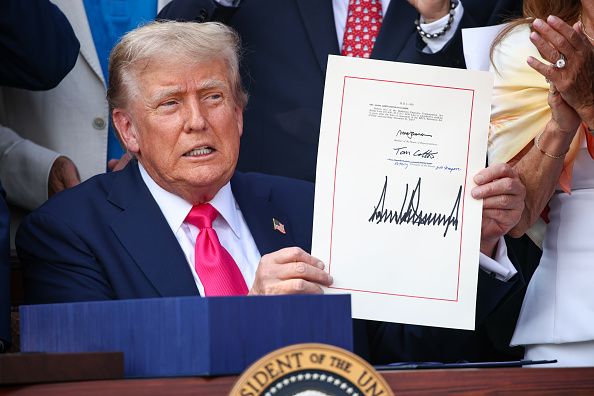Once the United States Supreme Court reminds our constitutional lawyer professor-turned-President of the existence of the Tenth Amendment and the limits of the Commerce Clause, thereby repealing Obamacare, the natural question becomes, what’s next? All of the problems that existed before President Obama, then-Speaker Pelosi, and Senate Majority Leader Reid forced through a bill to raise hundreds of billions of dollars in taxes, cut Medicare spending, and create yet another entitlement program we cannot afford will still exist.
The American health care system has many well documented flaws, but reminds me of Churchill’s description of democracy as the “worst form of government, except for all those other forms that have been tried.” Surely, our health care system is too expensive, leaves too many families without coverage, and is plagued by redundant paperwork and procedures. Yet, at its best, there is no better. When your child or parent is sick, you don’t wish they could be treated elsewhere. But, you might be worried about how you are going to pay for the medical bills after they get better.
The President often promised that he would bend the health care cost curve down, and I just wish he had succeeded, or even really tried, and had done so in a way that maximizes our freedom. Health care reform is filled with confusing acronyms and large numbers, but really comes down to one simple question: Who do we want making our health care decisions? Do we want doctors and their patients in charge or do we want government bureaucrats in charge? Since health care is such a personal matter – impacting us when we are the most vulnerable – and also expensive – consuming an increasingly larger share of our economy, how we answer this question may be one of the most important domestic policy decisions we make.
President Obama has made it clear his answer involves a top down government run approach that, as President Reagan famously said, “would have the efficiency of the Postal Service and the compassion of the I.R.S.” I was no great fan of the late Senator Ted Kennedy’s policies or politics, but did admire his philosophical consistency and dogged determination to get to a single payer system. I only wish more of our Republican members of Congress displayed those same traits in defense of a consumer based system. Senator Kennedy would pursue incremental steps or huge leaps towards government run health care, depending on the political circumstances, but he always worked to move the system in his direction. We need Republicans in Washington to stop viewing health care as simply a Democratic issue and to stop thinking they have achieved victory when they merely adopt a cheaper version of the Democratic plan. Over the years, Republican members of Congress have slowed down the other side, but have not prevented government from taking over more and more of our health care system. Indeed, the government is soon expected to pay for half of all health care spending, with that portion continuing to increase.
So, what next? How do we strengthen and improve a consumer based health care system? Let’s consider three main purchasers of health care – Medicare, Medicaid, and private insurance.
Medicare
The recent trustees report confirms what everyone already knows, but most in Washington want to ignore. Medicare is going broke, based on solvency of the hospital trust fund, percentage of GDP spent, growth in spending versus revenues, etc. The program today wastes billions of taxpayer dollars each year in fraud and waste, while trapping seniors in a system drowning in what the Mayo Clinic once counted as 130,000 pages of rules and regulations. Len Nichols described the program as the federal government trying to set 10,000 prices in 3,000 counties, making the Pentagon’s $400 hammers and $600 toilet seats look quaint by comparison. The Left wants to raise payroll taxes, while Congress and the bureaucrats continue to make political decisions on how much services should cost, which treatments are covered, and how often patients can visit their providers. The consumer based alternative is to adopt a premium support model, similar to the one used for federal employees, Members of Congress, and many in the private sector, to subsidize the majority of the premiums paid by seniors free to choose their own health care plan which best meets their needs.
Medicaid
The Medicaid program, jointly financed and overseen by the states and the federal government, continues to overwhelm state budgets, consuming more scarce tax dollars and threatening funding for schools and roads, while failing to deliver health care efficiently. While welfare reform continues to stand as one of the most impressive recent domestic policy accomplishments to come from Washington, not exactly a high bar, liberal advocacy groups pressured Congress to inexplicably exclude Medicaid. States need to be freed from the D.C. bureaucracy. The same local flexibility, accountability based on outcomes not process, and an emphasis on helping the poor to thrive in the mainstream that succeeded in transforming welfare will work with Medicaid. There is no excuse for a continued “separate but equal” health care system in this day and age. Democrats have blocked various Republican attempts to block grant the Medicaid program for years, while ignoring the pleas of governors from both parties for regulatory relief and an end to the unfunded mandates.
At the very least, Congress should allow states to opt-in to a more flexible long-term funding arrangement; the Obama Administration could accomplish this through waivers, but won’t. States would receive guaranteed federal funding, adjusted on a per capita basis to account for economic cycles, and would agree to predictable federal funding caps set lower than current predicted growth rates in exchange for relief from federal regulations. States would have the freedom to design programs that best meet their people’s needs, combined with an incentive to lower costs rather than game the system. Instead of the federal government designing one size fits all eligibility requirements and micromanaging benefit designs and copayment rules, states would be required to focus on improving health outcomes for their vulnerable populations. At the very least, Washington should allow states to start such a program for the able bodied populations, i.e., those who qualify for Medicaid primarily due to income and not health status, which comprise the majority of Medicaid beneficiaries, while considering special protections for the elderly and disabled.
Here is a radical thought – why not free the states to focus their efforts and spending on helping beneficiaries get better paying jobs so they can afford their own health care and break the cycle of dependence? Why not use more Medicaid spending to subsidize private coverage, rather than building public bureaucracies, as a transition to the independence envisioned in welfare reform?
Private Coverage
The American health insurance marketplace simply does not work as it should today. It actually does not resemble any reasonably functioning insurance system. The idea of insurance should be to pool risk over large populations and time to protect individuals against unpredictable and potentially overwhelming risk. Obviously, different people with different income, assets, and medical conditions will have different levels of overwhelming risk. Yet, health insurance, especially individual coverage, today often effectively screens out the sick, offering coverage when we least need it, and too often simply offers prepaid health care coverage.
A good way to understand the failings of the marketplace is to compare health care insurance with other insurance. For example, most of us don’t file claims with our auto insurers for every ding our car doors get in the parking lot, knowing the resulting increase in premiums and hassle in paperwork aren’t worth the payout. We either pay to fix the car door ourselves or live with the scratches. Yet, we have been trained to expect first dollar coverage for minor procedures, while more and more employers and plans are capping coverage with episodic, annual, or lifetime limits. Also, most of us aren’t frustrated at the end of the year that our homes haven’t flooded or burned down, expecting refunds for our property insurance premiums. We don’t set fire to a bedroom at the end of the year to ensure we get our money’s worth! Yet, many patients flood their doctors’ offices or refill prescriptions early towards the end of the year once they have exceeded their deductibles, determined to get their money’s worth.
Part of the problem is that our health insurance system has evolved over time almost by accident in response to wage controls, tax policies, and other pressures so that most Americans get their coverage through their employers. The resulting subsidy and economies of scale are important benefits, but it is time to modernize our health care system since neither the status quo nor the President’s prescribed fix is acceptable.
Just as technology is transforming our society and empowering the individual, our health care system must also evolve from a top down approach, run by either insurance or government bureaucrats, to a bottom up system where patients make decisions. We need more transparency, where individuals have access to pricing and easily understandable and comparable outcomes and quality data via the internet and also have portable electronic health care records, so that patients can easily navigate what could otherwise be a confusing, potentially scary, and highly technical array of options. Consumers should share in the savings of best practices and have more, not less, access to health savings accounts and other tax advantaged financing mechanisms that reward them for seeking care in cost-effective settings, reducing the likelihood of chronic disease, complying with medical regimens, and applying savings towards future health care costs. Insurance must be made portable across state lines and jobs, and accompanied by policies that reduce the dangers of adverse risk selection with the least amount of intrusion into the markets and our lives (e.g., reinsurance, high-risk pools, fixed open enrollment periods). Consumers, including those working for or owning a small business, must have the opportunity to purchase coverage through voluntary pools, whether through trade associations or churches or unions or whatever, to enjoy the same benefits of scale currently offered to those receiving care through large employers or the government. Payment should be for performance, not activity, rewarding integrated networks offering coordinated care, disease management, and preventative care. Frivolous lawsuit reform is a critical component of a reformed health marketplace that will save billions of dollars while also reducing overutilization. Finally, those needing help to afford their care should get that help via refundable tax credits to subsidize the cost of private coverage rather than building another government-run health plan.
Churchill also said about the American people, “We can always count on the Americans to do the right thing, after they have exhausted all the other possibilities.” With Obamacare, we have certainly exhausted all the other possibilities; now is the time to do the right thing and reform our health care system to empower the patient instead of the bureaucrats.
Bobby Jindal is the governor of Louisiana.




